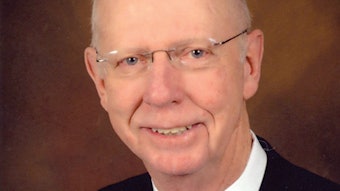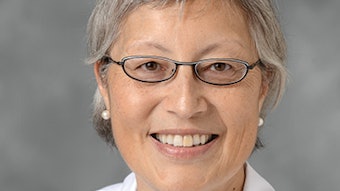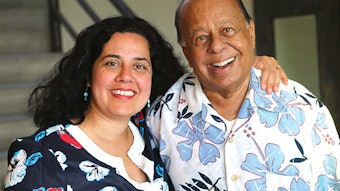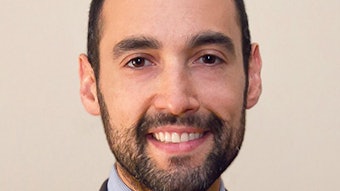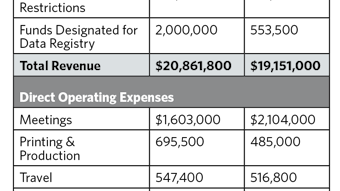Responsible surgery
The American College of Surgeons has released a Statement on Principles on the responsibility of the primary surgeon during surgery. Recent news reports had raised questions about the primary surgeon initiating a second surgery before the first surgery was fully completed.
The American College of Surgeons defines the intraoperative responsibility of the primary surgeon
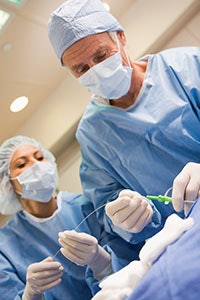
General statement
The primary attending surgeon is personally responsible for the patient’s welfare throughout the operation. In general, the patient’s primary attending surgeon should be in the operating suite or be immediately available for the entire surgical procedure. There are instances consistent with good patient care that are valid exceptions. However, when the primary attending surgeon is not present or immediately available, another attending surgeon should be assigned as being immediately available.
The definitions at the end of this Statement provide essential clarification for terms used herein.
Concurrent or simultaneous operations
Concurrent or simultaneous operations occur when the critical or key components of the procedures for which the primary attending surgeon is responsible are occurring all or in part at the same time. The critical or key components of an operation are determined by the primary attending surgeon. A primary attending surgeon’s involvement in concurrent or simultaneous surgeries on two different patients in two different rooms is not appropriate.
Overlapping operations
Overlapping of two distinct operations by the primary attending surgeon occur in two general circumstances.
The first and most common scenario is when the key or critical elements of the first operation have been completed and there is no reasonable expectation that there will be a need for the primary attending surgeon to return to that operation. In this circumstance a second operation is started in another operating room while a qualified practitioner performs non-critical components of the first operation allowing the primary surgeon to initiate the second operation, for example, during wound closure of the first operation. This requires that a qualified practitioner is physically present in the operating room of the first operation.
The second and less common scenario is when the key or critical elements of the first operation have been completed and the primary attending surgeon is performing key or critical portions of a second operation in another room. In this scenario, the primary attending surgeon must assign immediate availability in the first operating room to another attending surgeon.
The patient needs to be informed in either of these circumstances. The performance of overlapping procedures should not negatively impact the seamless and timely flow of either procedure.
Multidisciplinary operations
Contemporary surgical care may require multidisciplinary operations. During such operations, it is appropriate for surgeons to be present only during the part of the operation that requires their surgical expertise. However, an attending surgeon must be immediately available for the entire operation.
Delegation to qualified practitioners
The surgeon may delegate part of the operation to qualified practitioners including, but not limited to residents, fellows, anesthesiologists, nurses, physician’s assistants, nurse practitioners, surgical assistants or another attending under his or her personal direction. However, the primary attending surgeon’s personal responsibility cannot be delegated. The surgeon must be an active participant throughout the key or critical components of the operation. The overriding goal is the assurance of patient safety.
Procedure-related tasks
A primary attending surgeon may have to leave the operating room for a procedure-related task. Such procedure-related tasks could include review of pertinent pathology (“frozen section”) and diagnostic imaging; a discussion with the patient’s family; and breaks during long procedures. The surgeon must be immediately available for recall during such absences.
Unanticipated circumstances
Unanticipated circumstances may occur during procedures that require the surgeon to leave the operating room prior to completion of the critical portion of the operation. In this situation, a backup surgical attending must be identified and available to come to the operating room promptly.
Circumstances in this category might include sudden illness or injury to the surgeon, a life-threatening emergency elsewhere in the operating suite or contiguous hospital building, or an emergency in the surgeon’s family.
If more than one emergency occurs at the same time, the attending surgeon may oversee more than one operation until additional attending surgeons are available.
Surgeon-patient communication (Section II.A.)
The surgical team involved in an operation is dependent on the type of facility at which the operation is performed and the complexity of the surgery. At a free standing outpatient surgical center, many procedures are performed solely by the primary attending surgeon with no assistant. In contrast, a complex procedure at an academic medical center may involve multiple qualified medical providers in addition to the primary attending surgeon. As part of the pre-operative discussion, patients should be informed of the different types of qualified medical providers that will participate in their surgery (assistant attending surgeon, fellows, resident and interns, physician assistants, nurse practitioners, etc.) and their respective role explained. If an urgent or emergent situation arises that require the surgeon to leave the operating room unexpectedly, the patient should be subsequently informed.
Definitions
In an effort to provide some standardization of nomenclature and terminology, the following definitions are provided:
Back-up surgeon/surgical attendingThe qualified surgical attending who has been designated to provide immediately available coverage for an operation, during a period when the primary surgeon might be unable to fill this role.
“Concurrent or simultaneous operations” (or surgeries)
Surgical procedures when the critical or key components of the procedures for which the primary attending surgeon is responsible are occurring all or in part at the same time.
“Critical” or “key” portions of an operation
The “critical” or “key” portions of an operation are those segments of the operation when essential technical expertise and surgical judgment are required in order to achieve an optimal patient outcome. The critical or key portions of an operation are determined by the primary attending surgeon.
Immediately available
Reachable through a paging system or other electronic means, and able to return immediately to the operating room. This should be defined more completely by the local institution.
Informed consent
Described in ACS Statements on Principles II.A.
Multidisciplinary operations
One example of this would be a procedure where a surgeon of one specialty provides the exposure required by a second surgeon who performs the main surgical intervention (e.g.; a general or thoracic surgeon providing exposure for a neurosurgeon or orthopaedist to operate on the spine). Another example would be an operation that requires the involvement of two or more surgeons with different specialty expertise (e.g.; chest wall or head and neck resection followed by plastic surgical reconstruction; face or hand transplantation; repair of complex craniofacial defects).
“Overlapping or sequenced” operations for surgeons
The practice of the primary surgeon initiating and participating in another operation when he/she has completed the critical portions of the first procedure and is not essential for the final phase of the first operation. These are by definition surgical procedures where key or critical portions of the procedure are not occurring simultaneously.
Physically present
Located in the same room as the patient.
Primary attending surgeon
Considered the surgical attending of record or the principal surgeon involved in a specific operation. In addition to his/her technical and clinical responsibilities, the primary surgeon is responsible for the orchestration and progress of a procedure.
Qualified practitioner
Any licensed practitioner with sufficient training to conduct a delegated portion of a procedure without the need for more experienced supervision and who is approved by the hospital for these operative or patient care responsibilities.






